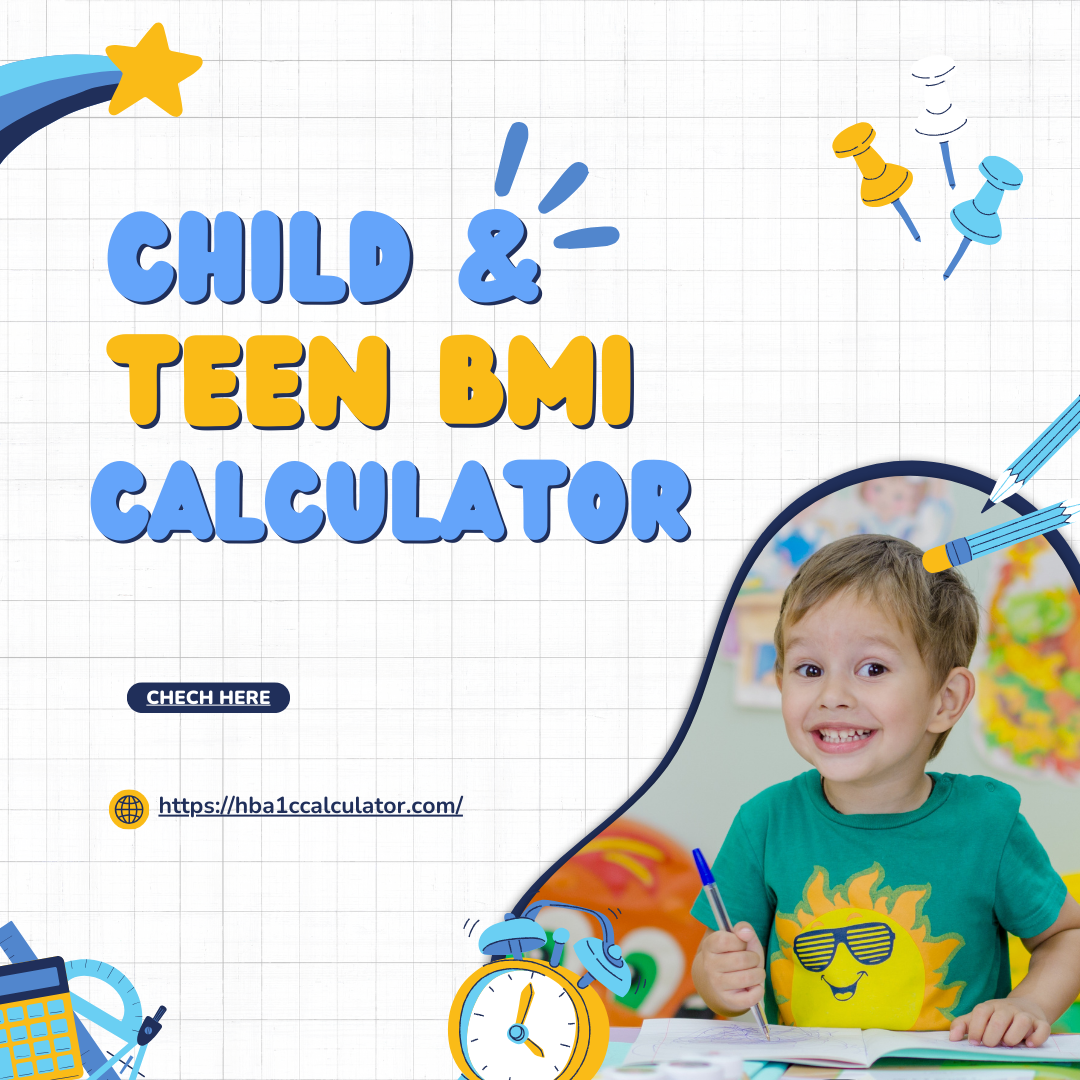The Child & Teen BMI Calculator (Body Mass Index) is a tool designed to assess whether a child or teenager is within a healthy weight range for their age and height. BMI is a measure of body fat based on height and weight, and it’s often used as an indicator of potential health risks associated with being underweight, overweight, or obese.
Child & Teen BMI Calculator

Monitoring your teen’s health is key to preventing health issues. Use tools like the Teen BMI Calculator for weight assessment and the HbA1c Calculator for tracking blood sugar levels. Together, they offer a comprehensive approach to teen health
How it works
Input: You typically enter the child’s or teen’s age, gender, height, and weight into the calculator.
Calculation: The calculator then uses this information to calculate the BMI of the child or teen.
Comparison: The calculated BMI is compared to standardized growth charts developed by organizations like the Centers for Disease Control and Prevention (CDC) or the World Health Organization (WHO). These charts take into account age and gender-specific growth patterns.
Interpretation: Based on the comparison, the calculator categorizes the BMI into different ranges, such as underweight, normal weight, overweight, or obese.
Assessment: The result helps parents, caregivers, and healthcare professionals assess whether the child or teen is within a healthy weight range for age and height.
FAQs
Q: What is BMI?
Body Mass Index (BMI) measures body fat based on height and weight. It is calculated by dividing a person’s weight in kilograms by the square of their height in meters. BMI is calculated similarly for children and teens but then compared to growth charts to determine percentile rankings based on age and gender.
Q: Why is BMI important for children and teens?
BMI is important for children and teens because it can help identify potential weight-related health issues early on. It serves as a screening tool to assess whether a child or teen is underweight, normal weight, overweight, or obese, which can guide further evaluation and intervention if necessary.
Q: How is BMI interpreted for children and teens?
BMI for children and teens is interpreted differently than for adults. Instead of using fixed thresholds for underweight, normal weight, overweight, and obese, BMI percentiles are used. These percentiles compare a child’s BMI to others of the same age and gender and categorize them as underweight (below the 5th percentile), normal weight (5th to less than 85th percentile), overweight (85th to less than 95th percentile), or obese (equal to or greater than the 95th percentile).
Q: Are there any limitations to using BMI for children and teens?
Yes, BMI has some limitations. It does not directly measure body fat or account for differences in body composition, such as muscle mass. Additionally, BMI charts are based on data from specific populations and may not accurately reflect the diversity of body types and ethnicities. Therefore, BMI should be used as part of a comprehensive assessment of a child’s or teen’s health and weight status, rather than as the sole indicator.